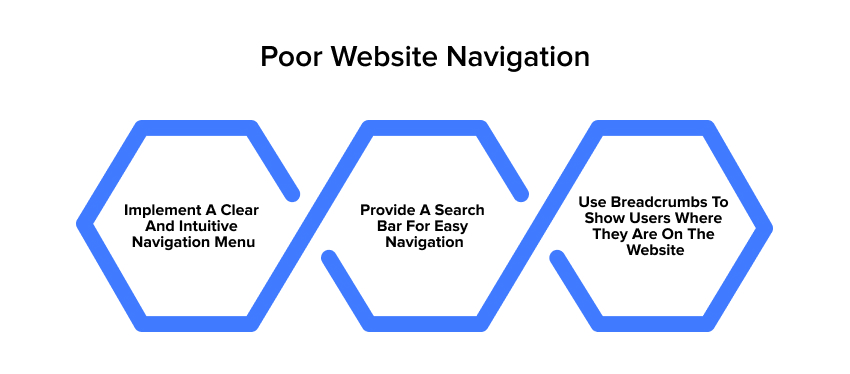In the ever-evolving world of eCommerce, customer satisfaction is paramount. The $5.2 trillion global eCommerce market has revolutionized the retail industry by offering convenience and flexibility. However, this growth has also introduced several challenges that can frustrate customers and hinder sales. Addressing these pain points is essential for enhancing customer satisfaction and boosting sales. In this blog post, we’ll explore ten common pain points faced by eCommerce customers and provide actionable solutions to alleviate these issues..
1. Slow Loading Speed

The Problem:
Slow loading speeds can be a significant deterrent for online shoppers. Research shows that a delay of just a few seconds can lead to higher bounce rates and lost sales.
Solution:
- Optimize Images: Use compressed images and lazy loading techniques to reduce page load times.
- Content Delivery Networks (CDNs): Implement CDNs to distribute content efficiently across various locations.
- Minimize HTTP Requests: Reduce the number of elements on each page, such as scripts, images, and CSS files.
2. Poor Website Navigation

The Problem:
With the increasing use of mobile devices for online shopping, a poor mobile experience can drive customers away.
Customers may abandon their shopping carts if they struggle to find their desired products. Complicated navigation can lead to a frustrating user experience.
Solution:
- Clear Navigation Menus: Implement an intuitive navigation menu with clear categories and subcategories.
- Search Functionality: Include a prominently displayed search bar to help customers quickly find products.
- Breadcrumbs: Use breadcrumb navigation to show users their location within the store and allow easy backtracking.
3. Poor Mobile Experience

The Problem:
With the increasing use of mobile devices for online shopping, a poor mobile experience can drive customers away.
Solution:
- Responsive Design: Ensure your website is fully responsive and adapts to different screen sizes.
- Mobile-Optimized Images: Use compressed and appropriately sized images for mobile devices.
- Simplified Checkout: Streamline the checkout process for mobile users by minimizing form fields and using autofill options.
4. Lack of Product Information

The Problem:
Insufficient product information can lead to uncertainty and hesitation, preventing customers from making a purchase.
Solution:
- Detailed Descriptions: Provide comprehensive product descriptions, including specifications, features, and benefits.
- High-Quality Images and Videos: Use multiple images and videos to show products from different angles and in various contexts.
- Customer Reviews: Display customer reviews and ratings to build trust and provide social proof.
5. Payment Issues

The Problem:
Payment failures and security concerns are major sources of frustration, leading to cart abandonment.
Solution:
- Multiple Payment Options: Offer a variety of payment methods, including credit/debit cards, digital wallets, and Buy Now, Pay Later (BNPL) options.
- Secure Payment Gateways: Use reputable and secure payment gateways to protect customer data.
- Payment Assistance: Provide clear instructions and support for resolving payment issues.
6. Shipping Problems
The Problem:
Shipping delays, high costs, and inaccurate delivery estimates can negatively impact the customer experience.
Solution:
- Transparent Shipping Policies: Clearly communicate shipping costs, delivery times, and any potential delays.
- Reliable Shipping Partners: Partner with reliable carriers to ensure timely and accurate deliveries.
- Order Tracking: Provide customers with real-time order tracking to keep them informed about their shipment status.
7. Lack of Customer Support
The Problem:
Inadequate customer support can lead to frustration and loss of trust. Customers need prompt assistance for their queries and concerns.
Solution:
- Multiple Support Channels: Offer various support channels, such as live chat, email, and phone support.
- Self-Service Options: Provide a comprehensive FAQ section and knowledge base for common queries.
- Responsive Support Team: Ensure your support team is well-trained and responsive to customer inquiries.
8. Difficult Return Policies
The Problem:
Complex and rigid return policies can discourage customers from making a purchase.
Solution:
- Clear Return Policy: Clearly outline your return policy, including the process, timeframe, and conditions.
- Easy Returns: Simplify the return process with pre-paid shipping labels and multiple return options.
- Flexible Policy: Consider offering a more lenient return policy to encourage purchases and build customer trust.
9. Personalization Issues
The Problem:
Customers expect a personalized shopping experience tailored to their preferences and behaviors.
Solution:
- Personalized Recommendations: Use customer data to provide personalized product recommendations based on their browsing and purchase history.
- Targeted Marketing: Implement targeted email campaigns and promotions that align with customer interests.
- User Profiles: Allow customers to create profiles where they can save preferences and shopping lists.
10. Confusing Checkout Process
The Problem:
A cumbersome and lengthy checkout process can lead to cart abandonment and lost sales.
Solution:
- Simplified Checkout: Minimize the number of steps and form fields required during checkout.
- Guest Checkout: Offer a guest checkout option to avoid forcing customers to create an account.
- Progress Indicators: Use progress indicators to show customers where they are in the checkout process.
Conclusion
Addressing these common pain points is crucial for enhancing the overall shopping experience and increasing customer satisfaction in the eCommerce space. By implementing these solutions, you can create a seamless, user-friendly, and enjoyable online shopping experience that encourages repeat business and drives sales.

